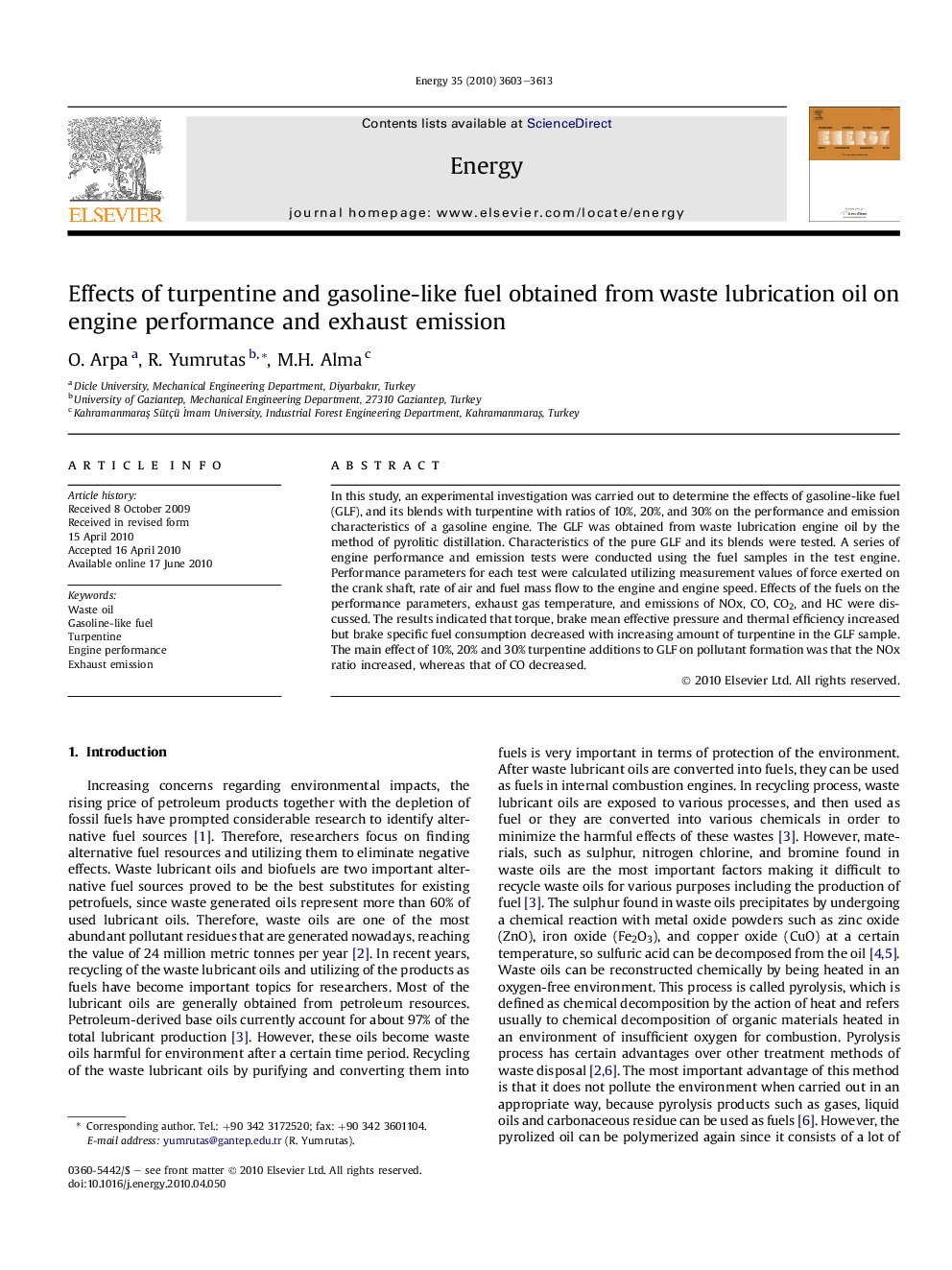| Article ID | Journal | Published Year | Pages | File Type |
|---|---|---|---|---|
| 1734932 | Energy | 2010 | 11 Pages |
In this study, an experimental investigation was carried out to determine the effects of gasoline-like fuel (GLF), and its blends with turpentine with ratios of 10%, 20%, and 30% on the performance and emission characteristics of a gasoline engine. The GLF was obtained from waste lubrication engine oil by the method of pyrolitic distillation. Characteristics of the pure GLF and its blends were tested. A series of engine performance and emission tests were conducted using the fuel samples in the test engine. Performance parameters for each test were calculated utilizing measurement values of force exerted on the crank shaft, rate of air and fuel mass flow to the engine and engine speed. Effects of the fuels on the performance parameters, exhaust gas temperature, and emissions of NOx, CO, CO2, and HC were discussed. The results indicated that torque, brake mean effective pressure and thermal efficiency increased but brake specific fuel consumption decreased with increasing amount of turpentine in the GLF sample. The main effect of 10%, 20% and 30% turpentine additions to GLF on pollutant formation was that the NOx ratio increased, whereas that of CO decreased.
